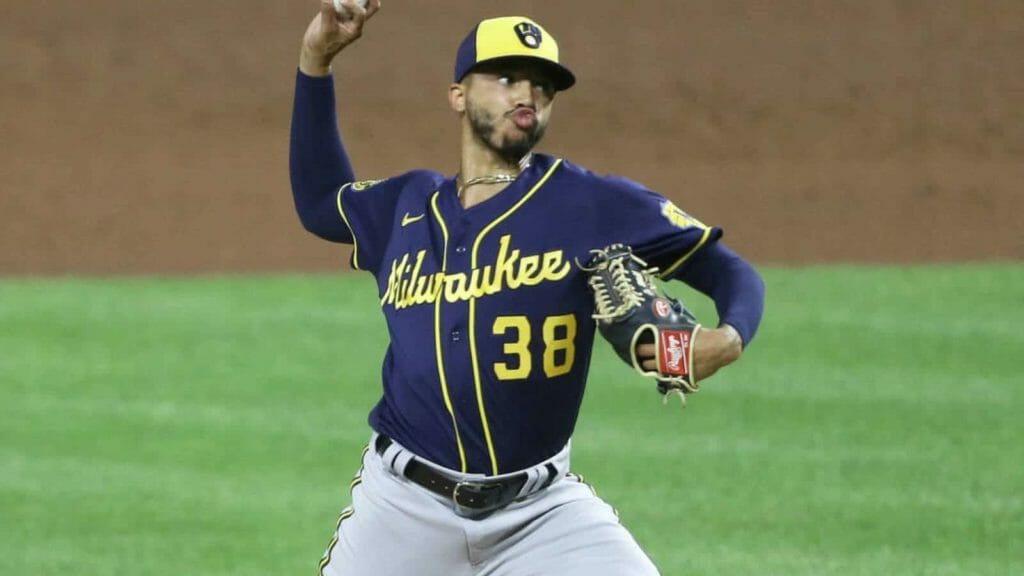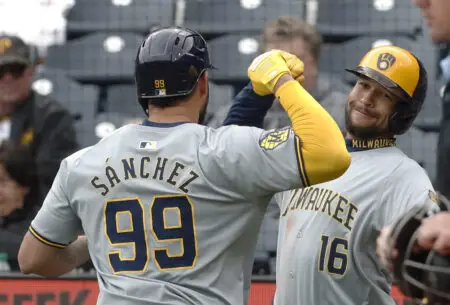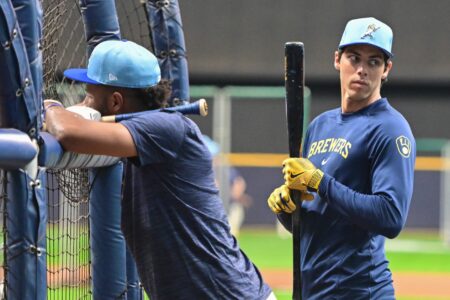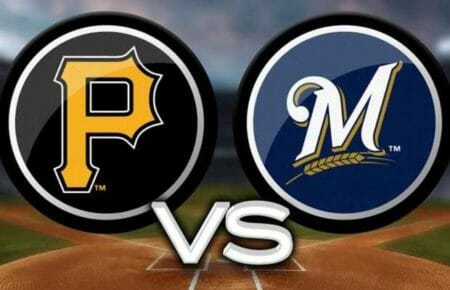The Brewers’ biggest positional strength in recent years has been the bullpen. Loaded with talent, manager Craig Counsell has been able to leverage the bullpen to its full potential in his time with the team, helping lead the team to three consecutive playoff appearances.
In a division that is truly “up for grabs”, the Brewers’ bullpen will need to be a key strength to hold the lead in crucial games all season long. There are a few familiar faces in this year’s projected rotation, yet there are also many new names to remember down the stretch.
Organized by bullpen role, here is our projection for the Brewers’ 2021 bullpen.
“Prove It” Players
Brad Boxberger
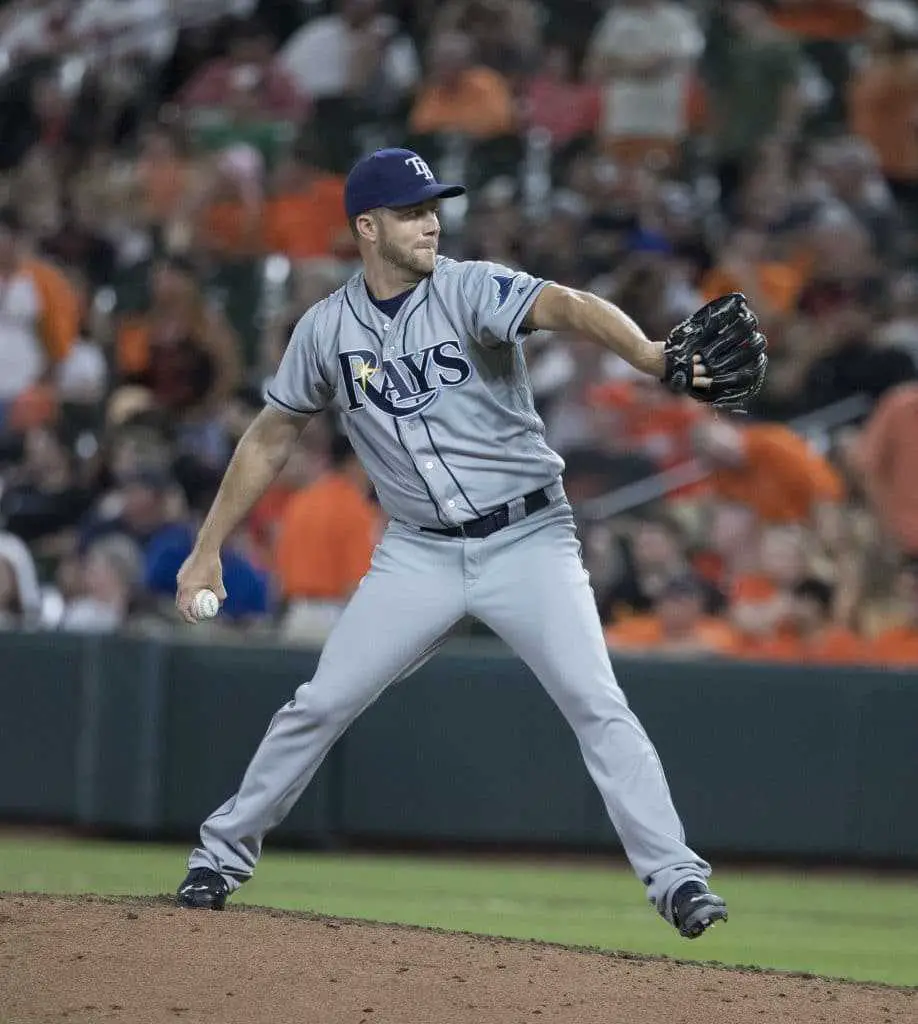
Entering his tenth season in the major leagues, Boxberger has had a career full of ups and downs. An American League All-Star in 2015, he posts a career 3.56 earned run average and a career 11.3 strikeouts per nine innings. He also lead the MLB in saves in 2015.
Boxberger spent the 2020 season with the Miami Marlins, going 1-0 with a 3.00 ERA in 23 games. He made three appearances in the postseason last year, pitching in 3 and 1/3 innings, not allowing a hit to the Chicago Cubs and the Atlanta Braves.
Boxberger has seen great numbers when using his four-seam fastball and slider as his “out” pitches. His changeup still needs work in order to make an impact on the big league roster. His changeup has seen a decline in vertical movement over the last two seasons according to Baseball Savant. It was a great pitch for him in 2019, dropping over 6 inches on average. Last season, it dropped only 2.3 inches on average. His opponent batting average when using his changeup in 2019 was .206, compared to .333 in 2020. He tends to leave his changeup in the middle of the strike zone, compared to his slider, which he pounds the outside corner with. If Boxberger is able to make his changeup effective once again, he’ll add to an already impressive bullpen.
Jordan Zimmermann
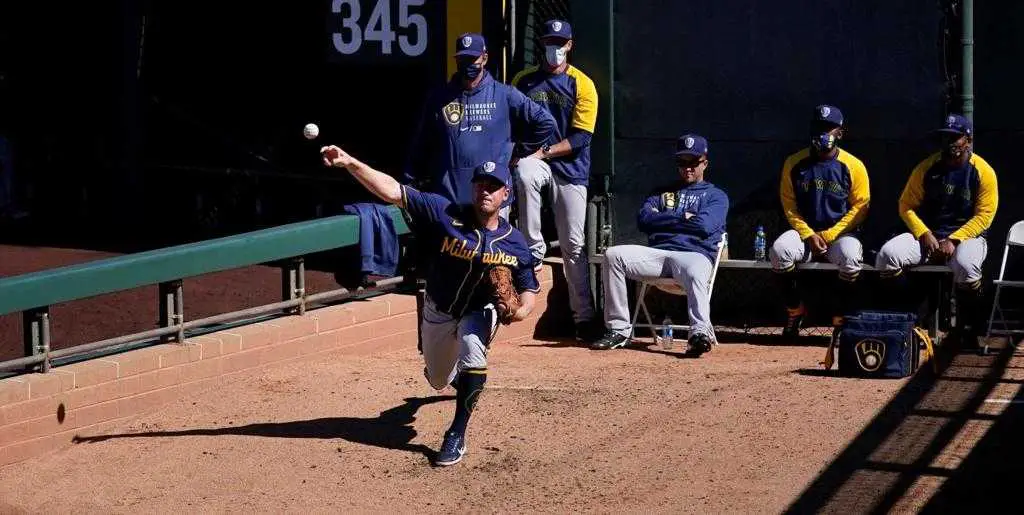
Jordan Zimmermann’s career has been nothing short of a rollercoaster up to this point.
A two-time All-Star with Washington in 2013 and 2014, Zimmermann has proven that he can be an effective arm in the major leagues, posting a 3.32 ERA in his seven seasons with the Nationals. He also finished in the top 10 in Cy Young voting in 2013 and 2014.
After signing a 5-year, $110 million contract with the Detroit Tigers in the 2015 offseason, Zimmermann seemingly forgot how to pitch a baseball. He posted a 5.63 ERA in 5 seasons in Detroit, never pitching in more than 30 games in a season with them. He lead the MLB in earned runs allowed in 2017 with 108 runs.
The Wisconsin native was signed to a minor league contract this offseason by the Brewers, cut by the team, and then re-signed once again as of March 28th. It will be interesting to see how Zimmermann performs at the minor league level, and possibly the major league level, this season.
“On-The-Fence” Major Leaguers
J.P. Feyereisen
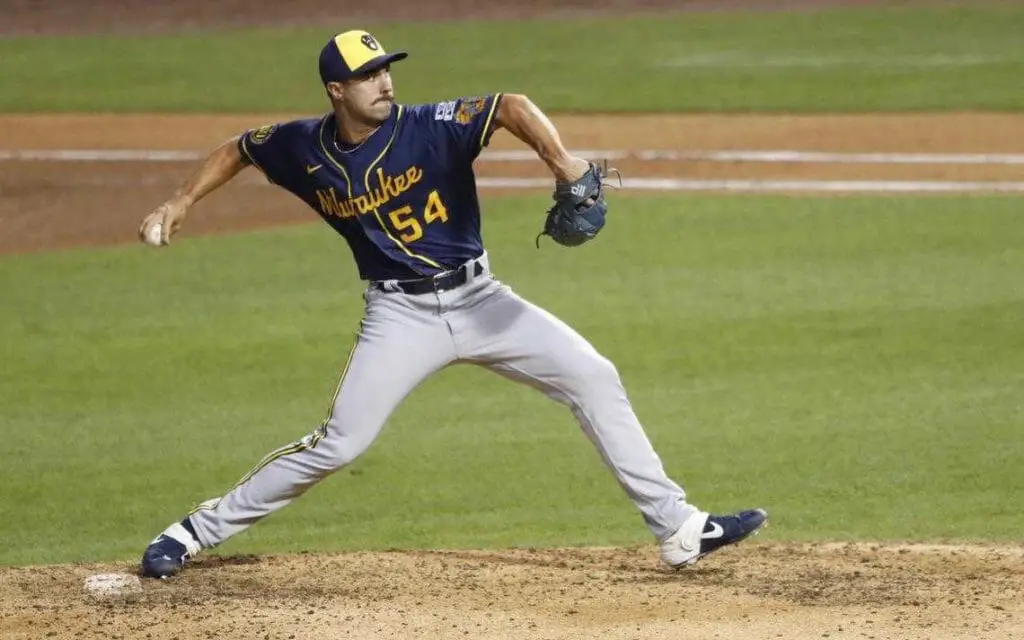
J.P. Feyereisen only pitched in six games last season for the Brewers, posting a 5.79 ERA over 9.1 innings.
Despite this, he has proven that he can be an effective arm in the bullpen while in the minor leagues.
Feyereisen has pitched in the Cleveland Indians’ and New York Yankees’ minor league systems prior to pitching for the Brewers. In 2019 with the Triple-A Scranton/Wilkes-Barre Railriders of the Yankees’ farm system, Feyereisen posted a 10-2 record in 40 appearances, with a 2.49 ERA in 61.1 innings, striking out 94 batters, which is good enough for a 13.8 K/9 ratio. His best season, arguably, came in 2016 with the Double-A Akron Rubberducks and Trenton Thunder of the Indians’ and Yankees’ systems, respectively, posting a sub-2.00 ERA in 58.1 innings, only giving up 38 hits for the season, and striking out 78.
Feyereisen has been nothing short of great this spring, posting a 1.04 ERA over 8.2 innings pitched. He’s only allowed one hit, a home run to Mariners third baseman Jantzen Witte.
Feyereisen has relied heavily on his high-velocity fastball over the course of his minor league career. This most likely will not translate well in the major leagues, but he does have a slider and a changeup, both with excellent movement. If Feyereisen continues to develop his breaking pitches, there’s no question that he’ll see some meaningful time in the major leagues this season.
Angel Perdomo
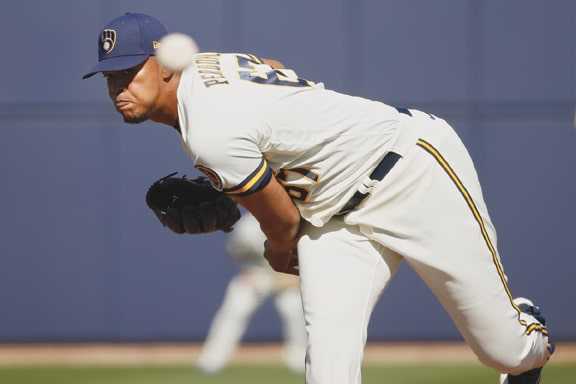
Angel Perdomo didn’t make much of his major league time last season with the Crew. He pitched in only 2.2 innings, surrendering seven ru
ns on three hits and walking seven batters in the process.
That being said, Perdomo is being given another chance to perform on the major league roster this season.
Perdomo is a ground-ball pitcher, which is a plus when it comes to getting outs in late-game scenarios. He’s not a pitcher that will give up many clutch hits to opposing offenses. In his eight minor league seasons with the Blue Jays’ and Brewers’ minor league systems, Perdomo has only allowed 30 home runs.
Perdomo’s only noticeable downside is that on average, he allows multiple baserunners per inning. He has a track record of high BB/9 and H/9 ratios (walks per nine innings and hits per nine innings) that coincide with WHIP (walks and hits per inning) that approach 1.5 per season.
That being said, Perdomo has a high-velocity fastball that he can throw for strikes, and a slider with above-average movement. With his large frame, standing at almost seven feet tall, Perdomo has serious potential. With a full season of minor league work, Perdomo could see some time on the major league roster as the season progresses.
Miguel Sanchez
A non-roster invite to spring training in 2021, Miguel Sanchez has seen plenty of time in the minor leagues with the Brewers. His best season was in 2018, when he pitched in 43 innings between Triple-A Colorado Springs and Double-A Biloxi, striking out 65 in the process. Sanchez has put together a strong spring thus far, and while he more than likely will not make the Opening Day roster, the 27-year-old Sanchez has a chance to make an impact this season in the major leagues.
Phil Bickford
Phil Bickford got his only taste of major league baseball in his career thus far last season with the Brewers.
It did not go well to say the least.
Bickford gave up four runs on four hits in one inning, which is not entirely promising. What is promising, though, is his pitch metrics. Bickford has above-average movement on his sinker and curveball, which shows that if he can vary his pitch usage, he’ll be an effective arm at the major league level.
Bickford has been suspended in the past for the use of marijuana, which goes against the MLB’s policy of drug use and abuse. So long as that is not a recurring issue, Bickford has very great odds to contribute on the Brewers’ major league roster this upcoming season.
Bullpen Toss-ups
Josh Lindblom
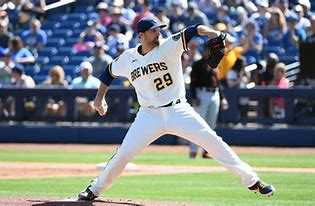
Like Jordan Zimmermann, who was previously mentioned, Josh Lindblom has had a career full of ups and downs.
Lindblom has pitched for six teams in his time in the major leagues, and pitched in South Korea for two seasons, winning their equivalent of the MVP award in 2019. He has not replicated that level of talent in the MLB just yet, with a career 4.35 ERA and 1.347 WHIP.
In 2020 with the Brewers, Lindblom went 2-4 in 12 games, 10 of which were starts. He had a 5.16 ERA in just 45.1 innings pitched, but also struck out 52 batters, which was good for a 10.3 K/9 ratio, a career-high for him. He has kept his strikeout numbers up this spring, with 14 K’s over 9.2 innings pitched.
Lindblom has always been a multi-pitch pitcher, with as many as six to seven pitches in his arsenal. In 2020, Lindblom relied heavily on his fastball, which did not help boost his effectiveness. He did not use his other pitches as much last season, rarely using his sinker at all, which was one of his most effective pitches in previous major league stints. He’ll have to mix up his pitches even more in 2021 to be productive.
With the Brewers announcing their starting rotation for the start of the season, Lindblom will most likely be used as a full-time bullpen arm in the role of long reliever. He will also likely be used as a spot starter when needed.
Eric Lauer
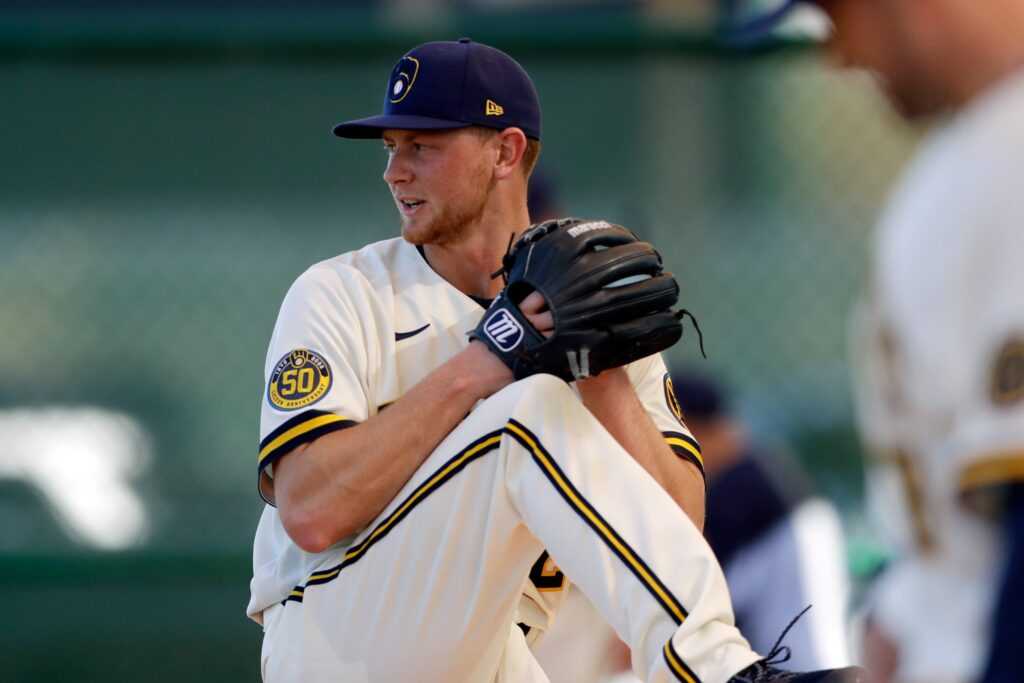
Eric Lauer was arguably one of the worst pitchers in baseball last season, though only appearing in four games for the Brewers.
This leads to an important question: why is Lauer even being considered for a spot in the bullpen?
One reason would be that Lauer does not give up the long ball very often, with a career home run percentage sitting at exactly three percent. He keeps the ball in the ballpark, and is mainly a ground ball pitcher.
The Eric Lauer Experience
But last season, we saw the opposite. Lauer’s line drive percentage was nearly double his ground ball percentage. Many other statistics show these rapid jumps as well, including in his average launch angle (23.4 degrees in 2020, up from 14.1 in 2019), his fly ball percentage (up 10 percentage points from 2019), his walk percentage (14.8 percent, doubling his 2019 rate), and his ground ball to fly ball (GB/FB) ratio (down to 0.62 from 1.69 in 2019).
That’s not promising.
Neither is his pitch analysis.
Lauer has never used pitch speed to his advantage. Rather, he’s used motion on his pitches to be effective. But, in order to be effective in that regard, a pitcher has to mix up his pitches.
That is exactly what Lauer did not do last season. Lauer threw his four-seam fastball over 50% of his pitches last season, and hitters tore it up. Opponents hit .474 against it, with an average launch angle of 29 degrees and average exit velocity of 87.1 MPH. His changeup was even worse. Not only did his changeup not drop on average last season, it was also hit at a .667 clip last season, with an opponent slugging percentage of 2.667.
That’s not a typo. His changeup was manhandled last season.
Could last season have just been a fluke year for Lauer? Absolutely, but only time will tell. The only way Lauer becomes an effective pitcher this season is by mixing his pitches at a greater rate. Lauer has been optioned to the minors to start the season, and if he’s effective at the minor league level, then the team may decide to call him up. Even then, look for Lauer to get more minor league time than major league time this season.
Long/Middle Relievers
Brent Suter
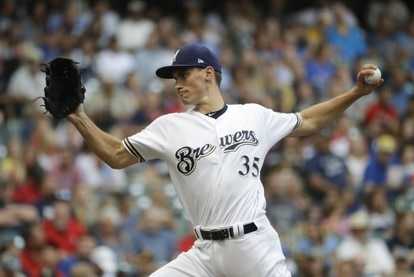
Coming off a strong spring training, lefty Brent Suter looks ready to make an immediate impact for the Brewers.
In his time in Milwaukee, Suter has been a great option out of the bullpen and as a spot starter. His best seasons have come in 2019 and 2020; last season, Suter appeared in 16 games (4 starts), posting a 3.13 ERA over 31.2 innings, striking out 38 with a career-high 10.8 K/9 ratio.
In 2019, Suter only appeared in nine games down the stretch for the Brewers. He was coming off of Tommy John surgery on his throwing arm from the previous season, and was arguably the best pitcher on the team in the few months he was active. He had a sub-1.00 ERA, only allowed 10 hits, and struck out 18 batters, posting a 15.00 K/BB ratio.
Suter has never had overpowering speed or movement in his pitch arsenal, nor does he mix his pitches. But, his effectiveness comes from his pace of play. One of the quickest pitchers in baseball, Suter has managed to be one of the best pitchers in baseball in terms of his opponent exit velocity, pitch control, and opponent hard hit percentage. Suter is going to be a key piece in the bullpen for the Brewers this season as long as he can replicate his pace for an entire 162-game season.
Drew Rasmussen
News has already leaked that the Brewers plan to use Rasmussen in a similar role to that of Brent Suter. He’ll likely be a multi-inning reliever, occasionally making a start or two.
Rasmussen is an exciting young arm in the bullpen this season. While he didn’t have a strong season last year with the team, Rasmussen has performed well this spring, possessing a 2.89 ERA over 9.1 innings of work. He’s only allowed four hits while striking out 11, but has also walked five batters and given up three runs.
With a blazing fastball and great changeup, Rasmussen needs further development on his slider and curveball to fully optimize his abilities. The 25-year-old righty has the potential to be a stellar arm in the bullpen this season.
Bobby Wahl
After being acquired in the 2018 offseason from the Mets, Bobby Wahl has only made three appearances for the Brewers in the big leagues due to injury.
His injury history still has not shown him mercy just yet.
Wahl strained his right oblique in a spring training game on Monday, March 15th, and will open the season on the injured list per Will Sammon of The Athletic. He pitched in four games this spring, and only allowed one run and one hit over three innings pitched, striking out four.
When healthy, Wahl has a great fastball among three other pitches that he uses. If/when Wahl gets opportunities to pitch this season, it will be interesting to see how effective he can truly be at the major league level, considering his small sample size of big league appearances.
Ray Black
In his short time in the major leagues, Ray Black has shown signs of high-ceiling potential. Black is in the 99th percentile of pitchers in fastball speed and spin rate according to Baseball Savant, and mixes it well with his quick slider. He pitched in three games in 2020, only allowing two hits and one run with three strikeouts.
Black is currently not on the Brewers’ active roster, meaning he will not be available for use on Opening Day. If he can control his pitch locations and boost the movement on his slider, the righty might make a serious impact in the major leagues this season.
Set-Up Relievers
Justin Topa
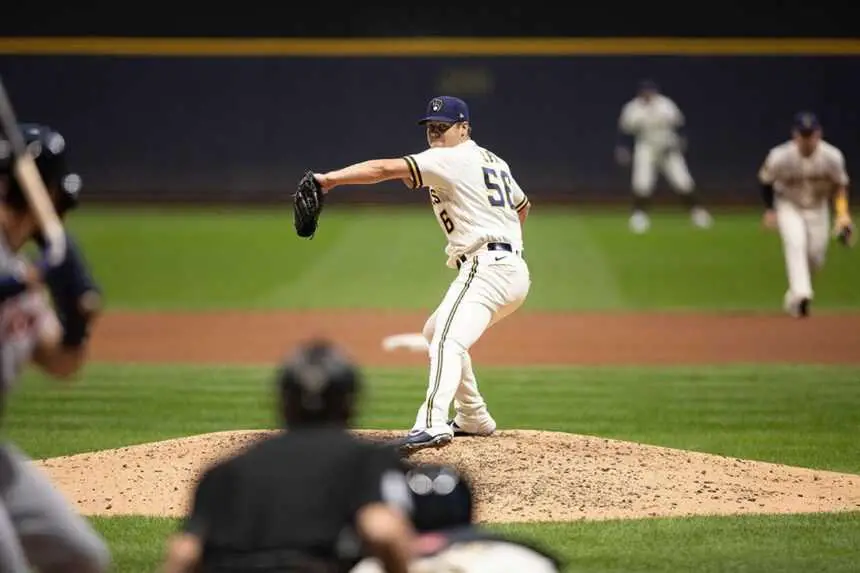
Justin Topa will not be available until later in the season. He is expected to miss at least half of the season with an elbow injury. Elbow injuries have plagued him multiple times in his career, pushing back his debut to last season. He’s due for an MRI in the coming days, but will not be available to start the season.
When healthy, Topa is a very effective pitcher. In 2020, Topa put up a 2.35 ERA with 12 strikeouts in 6 innings pitched. Topa is a sinker-heavy pitcher, with quite the movement and break on both his sinker and slider. With his sinker and fastball reaching speeds close to 100 miles per hour, Topa has the tools to be a productive set-up man in the Brewers’ bullpen. He can shut down opponent offenses and set up save opportunities for the closer at the ends of games.
Eric Yardley
Eric Yardley had quite the breakout season in 2020 with the Brewers. He pitched in 24 games for the Brewers last season, going 2-0 with a 1.54 ERA. Yardley is a ground ball pitcher, getting outs by getting opposing hitters to make weak contact with his pitches (he had a 62.7% ground ball percentage last season and only gave up two home runs).
While his pitches are not overpowering, his unique delivery and pitch movement help make him a potent arm. Like Topa, Yardley is a sinker-first pitcher with exceptional movement on his pitches. His curveball alone had a whiff percentage of 31.8% by itself last season.
Yardley is now 30 years old, but for this season, his age won’t affect him just yet. Look for him to be a key contributor at the back end of the bullpen while Justin Topa recovers from his injury.
Devin Williams
The reigning National League Rookie of the Year is quite the talent to say the least. Finishing seventh in the Cy Young award race last season, he had a 0.33 ERA in 27 innings pitched, striking out 53 batters. That’s good enough for a 17.7 K/9. He was also in the 100th percentile in multiple categories, including strikeout percentage (53%) and expected batting average (.104).
In other words, he’s ridiculously good.
Williams is widely known for his changeup movement. His changeup is arguably the best pitch in all of baseball, only being hit twice all season in 2020. The movement on his changeup is the most drastic in all of baseball, averaging 8.3 inches of drop and 4.8 inches of horizontal movement last year. Those are 26% and 36% above the average movement of a changeup, respectively.
Williams missed the postseason last year, and has only pitched 2.2 innings this spring, allowing only one hit. That being said, Williams is on the Opening Day roster, and will be ready to perform this season. The door is open for him to be used as both a set-up man and as a closer.
For now, though, he is going to be in the set-up role behind one other All-Star caliber pitcher.
You probably know who I am talking about.
Closer
Josh Hader
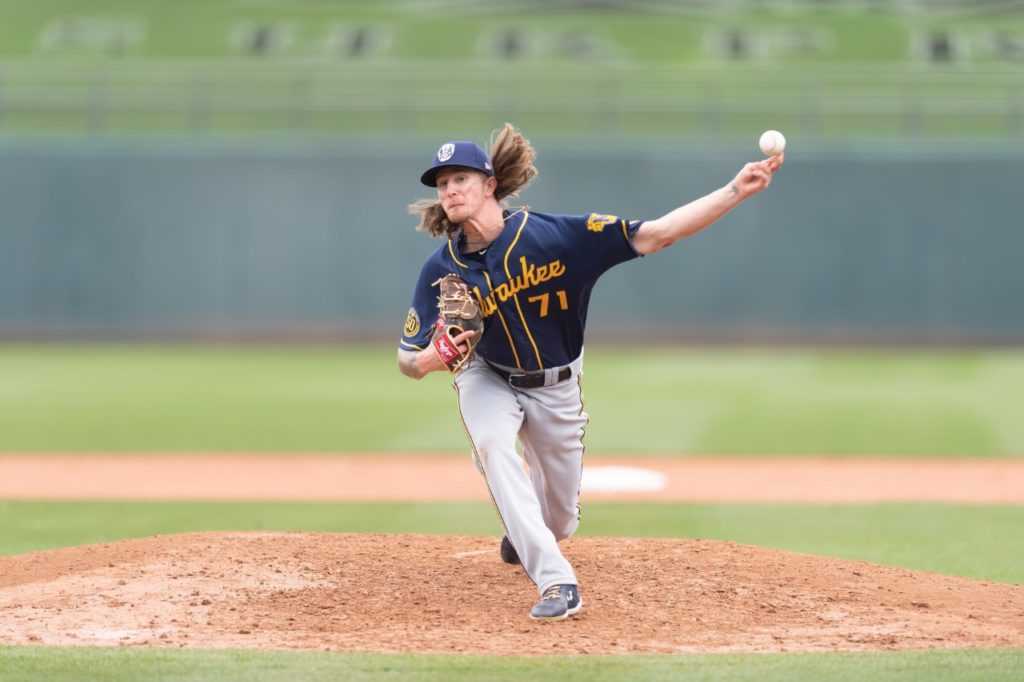
There’s not much to say that is not already known about Hader. Many can agree that he is arguably the best left handed reliever in baseball.
Hader will be the main option in the closer role for the Brewers this season. In his four seasons in Milwaukee, he has racked up 62 saves with a career 15.3 K/9. In his All-Star seasons in 2018 and 2019, Hader posted a combined wins above replacement (WAR) rating of 4.8.
Hader’s velocity dipped from 2019 to 2020, which could explain why his statistics also took a dive in 2020. His ERA jumped from 2.62 to 3.79 in one season, and his walks per nine innings increased from 2.4 in 2019 to 4.7 in 2020.
Fluke season? It might have been. Was it a bad season in any regard? To some, yes, but overall, he was still one of the most efficient relievers in baseball in 2020. While some may see Devin Williams as the better option at closer, the fact of the matter is that Josh Hader will be going into 2021 as the team’s closer.
Follow for More!
Looking for more great content on the Milwaukee Brewers? Follow me on Twitter at @sam_uel27 and follow us at @WiscoHeroics1! To read more of our articles and keep up to date on the latest on all things Wisconsin sports, click here.
Be sure to check out our merch page here! Use promo code “WISCO” at check out to receive $1 off your order!

